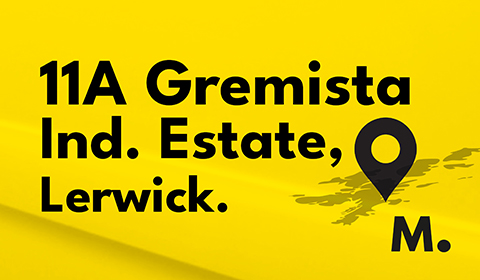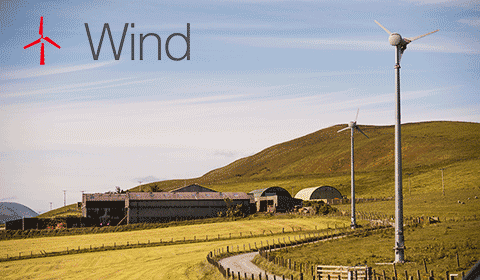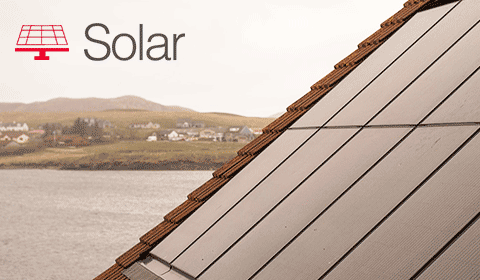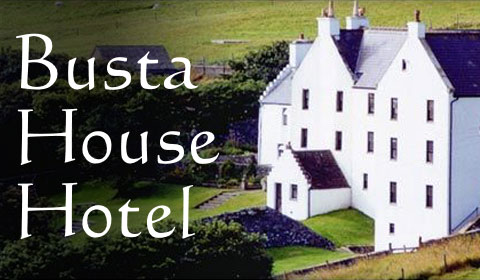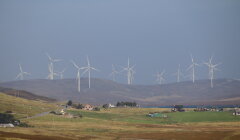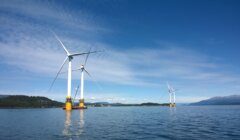Letters / ‘It’s breaking my heart’
Back in April 2015, former vice chairman of Sustainable Shetland, James Mackenzie, was invited to give a presentation to a Planning Democracy event in Glasgow. Among other things, the conference explored options for a more equitable planning system, including the idea of equal rights of appeal to create a level playing field that allows communities the same rights as developers. Mackenzie has now submitted his presentation as a letter to Shetland News, saying “not much has changed since then [2015] except that SSE is now the sole owner of Viking Energy”.
The ‘Shetland share’ (Shetland Charitable Trust and the Burradale wind farm) of the project’s income now limited to “a preferential rate of return” on its investment.
And in spite of Ofgem not having given a final approval for the interconnector cable, construction work on the wind farm’s infrastructure has begun.
“On 10 December 2010 Shetland Islands Council (SIC) voted, by nine votes to three (out of a total of 22 councillors) to approve the Viking Energy Wind Farm (VEWF) planning application.
If the council had not approved it, a Public Local Inquiry (PLI) would automatically have been instigated. Now, however, the holding of a PLI would be at the discretion of the Scottish Government in its consideration of the application.
The SIC approval went against the advice of its planning officers who had recommended objection on the grounds that the wind farm would have been contrary to the Shetland Local Development Plan.
The fact that so few councillors took part in the debate and did not vote was because many perceived a conflict of interest, as they were also members of Shetland Charitable Trust (SCT), which at that time had a 45 per cent share in the Viking Energy Partnership (VEP).
In effect they were developers as well as council members making a planning decision. The SIC also owns a significant proportion of the land on which the windfarm is proposed to be built.
Fifty per cent of VEP was then owned by Scottish and Southern Energy (SSE), and five per cent by the owners of the Burradale wind farm in Shetland.
SCT was set up to benefit the Shetland community from funds generated by the oil industry which had built the Sullom Voe Oil Terminal.
After the council meeting I emailed one of the councillors who had voted against approval to congratulate him on his stance. This is how he replied: “They were not in listening mode as the convenor had stitched it up as usual…There is a danger that this project will be railroaded through as a former career manager with SSE is the head of the Energy Consents Unit, and the First Minister has been overheard saying it will be pushed through.”
Become a member of Shetland News
A personal, and perhaps unreliable opinion? Maybe. But let’s look a little into the now murky history of this Viking saga.
It goes back almost to the turn of the century when SSE began looking into the possibility of a 300MW wind farm in Shetland, connected to the UK electricity grid by an interconnector cable. Not long afterward the SIC announced that it was also looking into a similarly sized wind farm – ostensibly for community benefit.
In 2005 the SIC and Shetland Aerogenerators, owners of the Burradale wind farm, formed a company called Viking Energy (VE). It’s confusing (and names have changed since) but as noted above VE now [in 2015] formed 50 per cent of the VEP partnership with SSE. A year later a Memorandum of Understanding was signed by VE and SSE, and in January 2007 the Busta House Agreement was signed between VE and SSE, and VEP was formed in order to build the VEWF.
There had been no public consultation about the windfarm up to this point, and to this day the agreement remains secret from the public – because of “commercial confidentiality”.
In September of that year the SIC transferred its share in VEP to SCT; at that time local authorities could not be electricity generators – but remember that all 22 councillors were then also SCT trustees!
In February 2008 Sustainable Shetland was formed in opposition to the wind farm and rapidly gained a membership of over 500 individuals (in 2015 about 850). Shortly afterwards the Aith Grazings Committee – representing crofters on whose common grazings a large part of the wind farm would be built (and who stood to gain substantial compensatory income) publicly declared opposition to the wind farm.
In November 2008 Sustainable Shetland launched a petition to the SIC opposing the wind farm. This was finally delivered to the Town Hall and SIC Convenor Sandy Cluness in July 2009 with 3,474 signatures, a number unprecedented in Shetland’s history of petitions. The convenor was quoted as saying: “If the majority of the Shetland public are against it, then it shouldn’t go ahead.”
By that time, however, an SIC “Economic Policy (2007-2011) Report” had already committed to an interconnector and to support the wind farm to the planning stage. And in May 2009 VEP had submitted its first planning application for 150 turbines to the Scottish Government’s Energy Consents Unit (ECU).
The SIC held its first public consultation in September and October 2009, with four well attended public meetings (which were minuted and published). Each had votes cast in favour of or against the wind farm, and an average of 75 per cent of people voted against.
Scottish Natural Heritage (SNH), the Scottish Environmental Protection Agency (SEPA), RSPB, the John Muir Trust, Shetland Amenity Trust, Shetland Bird Club, and Sustainable Shetland, all objected to the planning application, but before the SIC had delivered an opinion, VEP withdrew it.
It then submitted an Addendum in September 2010, for 127 turbines. (13 in the so-called Collafirth Quadrant were apparently withdrawn for “ecological” reasons, but the fact that these turbines were in an area of constraint due to Scatsta Airport was not mentioned by the developer.)
VEP also abandoned a Health Impact Assessment it had previously promised and commissioned.
SEPA subsequently withdrew its objection (although with many conditions, and one might say with considerable misgivings), but the other organisations, including SNH, the Scottish Government’s scientific advisory body, maintained their objections. And as said before, the SIC planners recommended that our council object. In addition, 2,772 individuals registered an objection, while 1,106 approved.
As we know now, in April 2012 the Scottish Government refused the option of a PLI and, against SNH advice, granted consent for 103 turbines – 24 of the 127, in the “Delting Quadrant”, being deemed to be in too close proximity to Scatsta Airport at Sullom Voe.
Sustainable Shetland then decided to pursue its only option to challenge the consent – Judicial Review. For one reason and another this became a long drawn out affair, which cost the organisation not far short of £200,000, and it is testament to the continued commitment of its members and supporters that the majority of this cost was met by scores of individuals.
But the toll has been huge. We have in Shetland a divided community, we have people who would be living in the vicinity of the wind farm worried about the impact on their health and their property value, and about loss of amenity (over 70 of the turbines are planned to be within 2 kilometres of occupied dwellings), and the impact on blanket bog through disturbance, drainage, concrete foundations, roads and quarries (misleadingly termed borrow pits). The turbines themselves would be massive [now increased in overall height from 145 to 155 metres], and wildlife would be adversely affected.
But that’s okay for the SIC, SCT, and the Scottish Government, because all that is outweighed by the perceived economic benefit and by renewable energy targets.
The emotional cost has been high too. I know of at least two Sustainable Shetland management committee members who have suffered nervous breakdowns on account of the stress involved with the campaign.
We have had abuse hurled at us by those in positions of power, and maintaining momentum through several setbacks has been difficult. And for those many members who would have to live (let’s not beat about the bush) IN the wind farm, there is worry, anger, sorrow, despair.
Now that the Supreme Court has upheld the Scottish Government’s consent for VEWF, the danger is that, as both the UK and Scottish governments have indicated, more wind farms will be built in Shetland in order to justify the interconnector cable; the Northern and Western Isles are seen as being the “powerhouses” of renewable energy, with no regard for the environment nor for overall impacts on community, and with questionable economic justification.
The SIC in December 2010 drove not a horse and cart but a juggernaut through planning and local democracy, and set a dangerous precedent for the future. And in hindsight, it seems that, in spite of all the so-called public consultation, the approval and consent for the wind farm was indeed – as that councillor opined – a foregone conclusion. It’s all been a sham.
If this future comes about – and it is still not an absolute certainty (in other words the SCT and SIC, in their investments, have gambled with public funds) – then I personally will seriously consider if I could continue living in Shetland, for effectively it will have broken my heart.
And that’s all I really want to say to you today. Thank you.”
James Mackenzie
Tresta
Become a member of Shetland News
Shetland News is asking its readers to consider paying for membership to get additional perks:
- Removal of third-party ads;
- Bookmark posts to read later;
- Exclusive curated weekly newsletter;
- Hide membership messages;
- Comments open for discussion.
If you appreciate what we do and feel strongly about impartial local journalism, then please become a member of Shetland News by either making a single payment, or setting up a monthly, quarterly or yearly subscription.


















